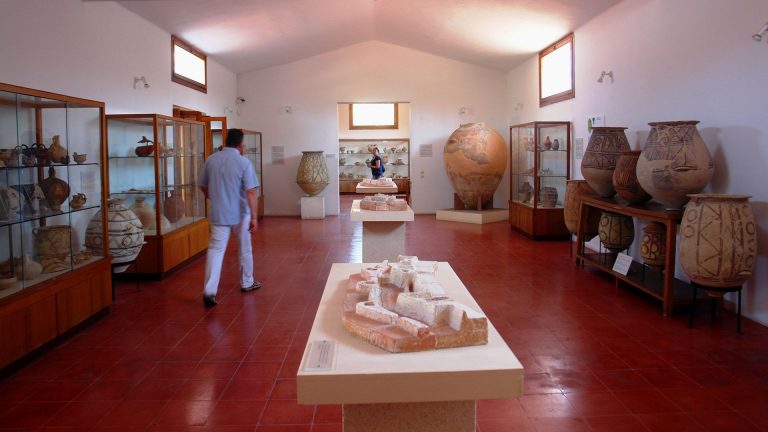The Archaeological Museum of Aegina stands as a repository of the island’s rich cultural heritage, preserving artifacts that span millennia of history. Established in 1828 by Ioannis Kapodistrias, the first governor of the Greek State, in collaboration with the esteemed historian and scholar Andreas Moustoxidis, the museum has evolved over the years to become a vital institution in the study and appreciation of Aegina’s past.
Initially housed in a neoclassical building in the heart of Aegina Town, the museum found its current home in 1980, situated near the archaeological site of Kolona, where remnants of the ancient temple of Apollo still stand. This modern facility provides a fitting setting for the display and interpretation of the island’s archaeological treasures.
Within the halls of the Archaeological Museum of Aegina, visitors encounter a diverse array of artifacts unearthed from ancient sites across the island. From Kolona to the temple of Athena Aphaia, and the sanctuary of Ellanios Zeus, the museum offers a comprehensive glimpse into Aegina’s rich past.
Among the notable exhibits are fragments of ancient columns, intricately crafted funerary steles, and ornately decorated vases adorned with scenes from daily life and mythological tales. Visitors can also marvel at archaic inscriptions that offer insights into the language and customs of antiquity, as well as marble statues that reflect the artistic achievements of ancient Aeginetan craftsmen.
As a custodian of Aegina’s cultural legacy, the Archaeological Museum serves not only as a repository of ancient artifacts but also as a center for education and research. Through its exhibitions and educational programs, the museum seeks to illuminate the island’s history and foster a deeper appreciation for its rich cultural heritage among visitors and scholars alike.
Sorry, no records were found. Please adjust your search criteria and try again.
Sorry, unable to load the Maps API.
